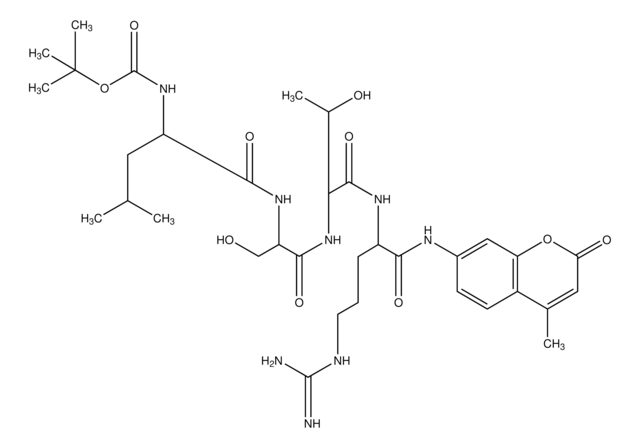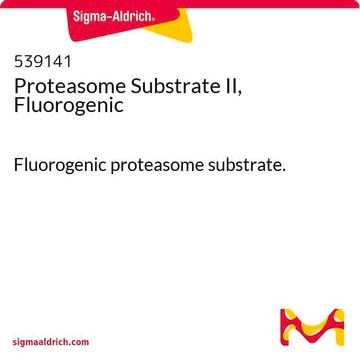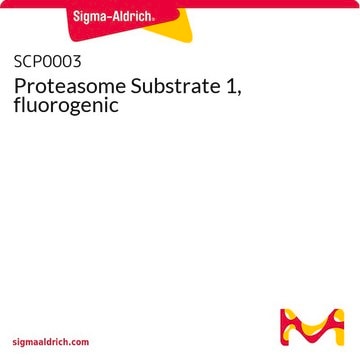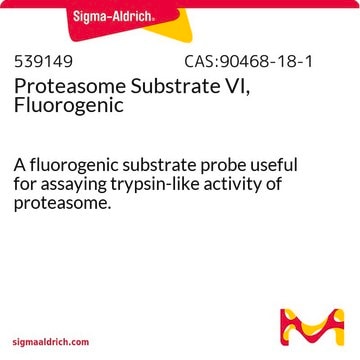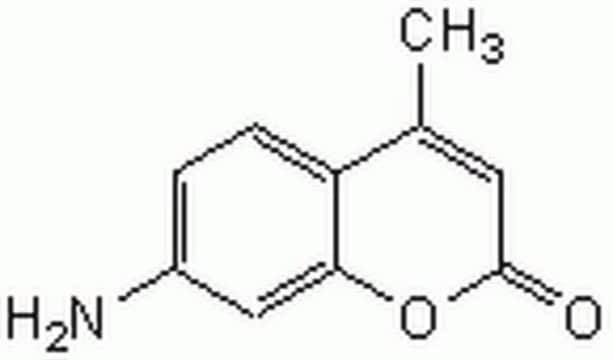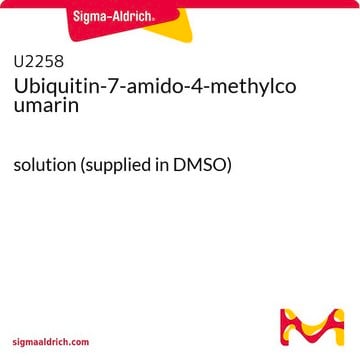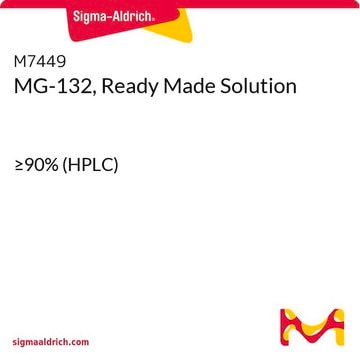Wichtige Dokumente
C0483
Z-Leu-Leu-Glu-7-amido-4-methylcoumarin
≥95%, solid
Synonym(e):
Cbz-Leu-Leu-Glu-AMC, Z-LLE-AMC
Größe auswählen
Größe auswählen
About This Item
Empfohlene Produkte
Qualitätsniveau
Assay
≥95%
Form
solid
Löslichkeit
DMSO: soluble
Lagertemp.
−20°C
SMILES String
CC(C)C[C@H](NC(=O)OCc1ccccc1)C(=O)N[C@@H](CC(C)C)C(=O)N[C@@H](CCC(O)=O)C(=O)Nc2ccc3C(C)=CC(=O)Oc3c2
InChI
1S/C35H44N4O9/c1-20(2)15-27(38-34(45)28(16-21(3)4)39-35(46)47-19-23-9-7-6-8-10-23)33(44)37-26(13-14-30(40)41)32(43)36-24-11-12-25-22(5)17-31(42)48-29(25)18-24/h6-12,17-18,20-21,26-28H,13-16,19H2,1-5H3,(H,36,43)(H,37,44)(H,38,45)(H,39,46)(H,40,41)/t26-,27-,28-/m0/s1
InChIKey
FOYHOBVZPWIGJM-KCHLEUMXSA-N
Amino Acid Sequence
Allgemeine Beschreibung
Anwendung
Biochem./physiol. Wirkung
Lagerklassenschlüssel
11 - Combustible Solids
WGK
WGK 3
Flammpunkt (°F)
Not applicable
Flammpunkt (°C)
Not applicable
Persönliche Schutzausrüstung
Eyeshields, Gloves, type N95 (US)
Hier finden Sie alle aktuellen Versionen:
Besitzen Sie dieses Produkt bereits?
In der Dokumentenbibliothek finden Sie die Dokumentation zu den Produkten, die Sie kürzlich erworben haben.
Kunden haben sich ebenfalls angesehen
Active Filters
Unser Team von Wissenschaftlern verfügt über Erfahrung in allen Forschungsbereichen einschließlich Life Science, Materialwissenschaften, chemischer Synthese, Chromatographie, Analytik und vielen mehr..
Setzen Sie sich mit dem technischen Dienst in Verbindung.
